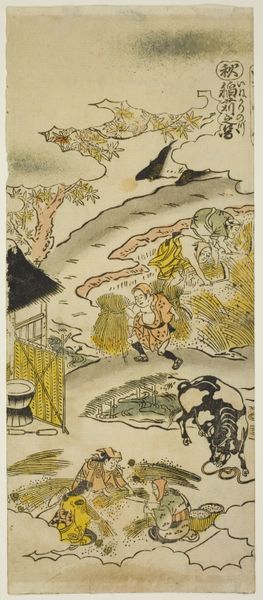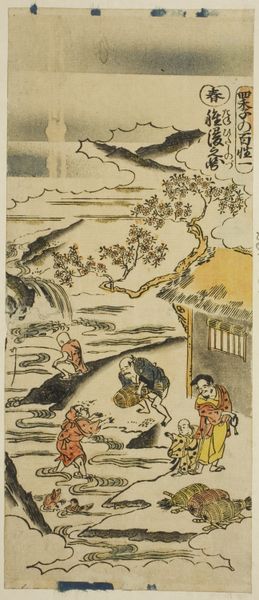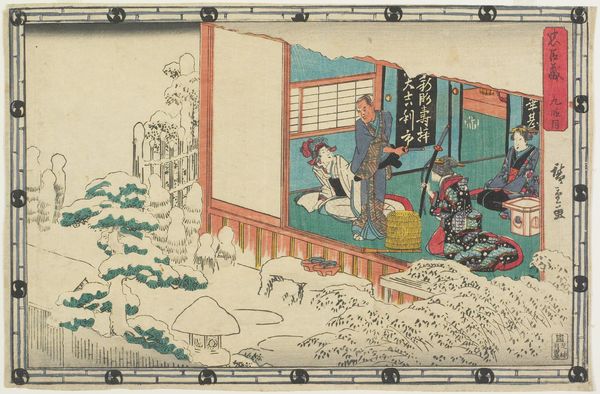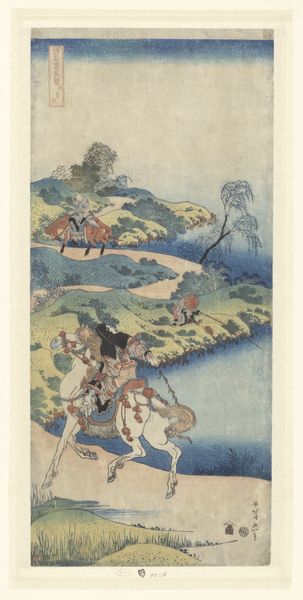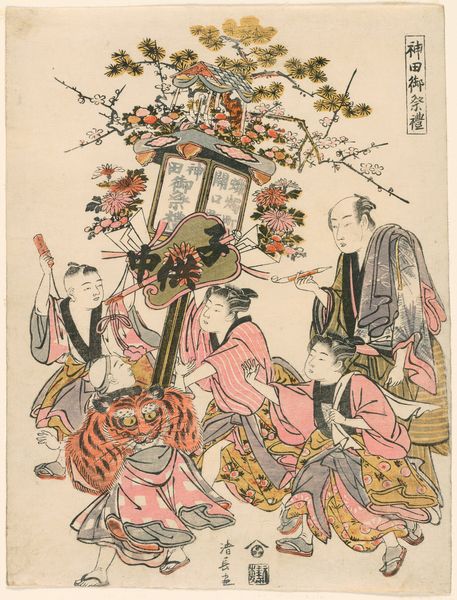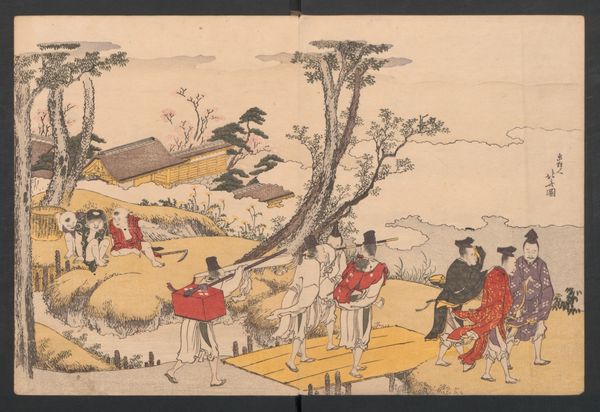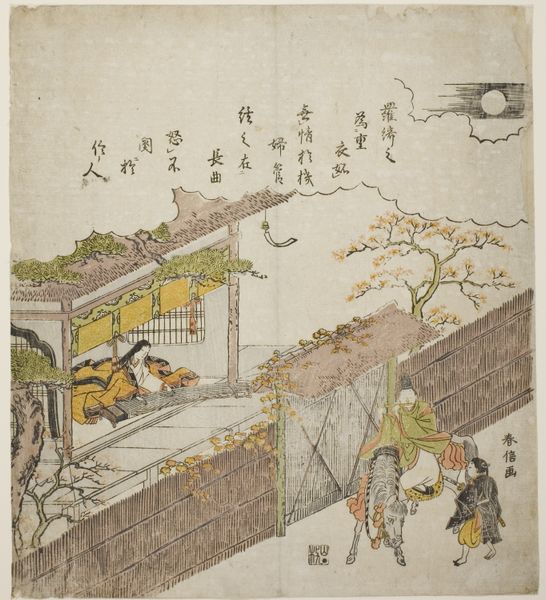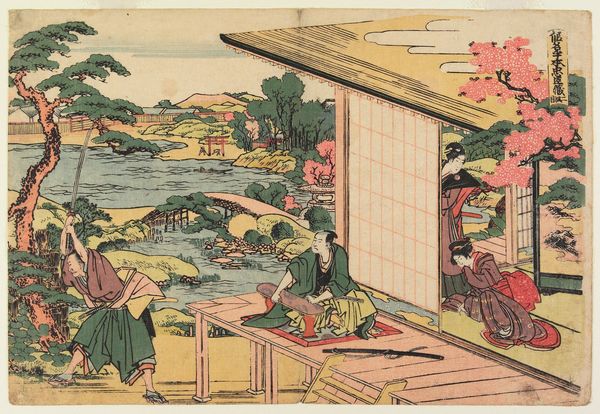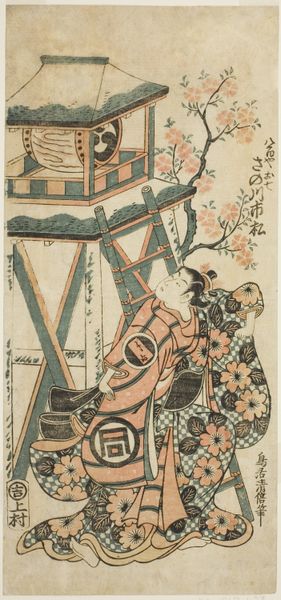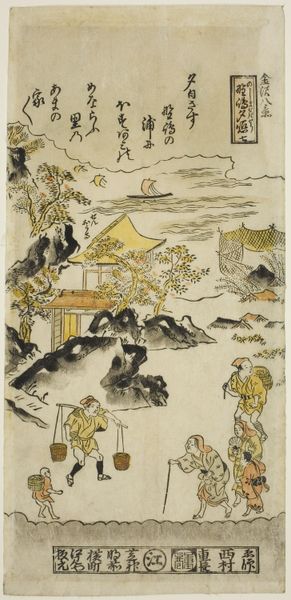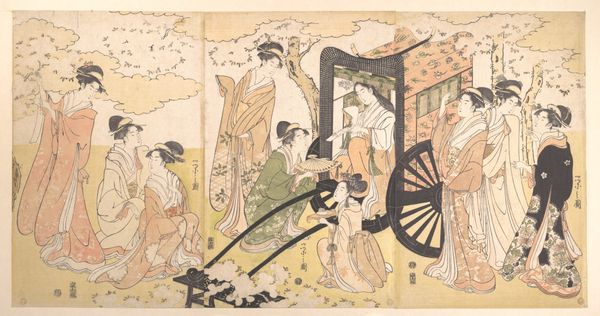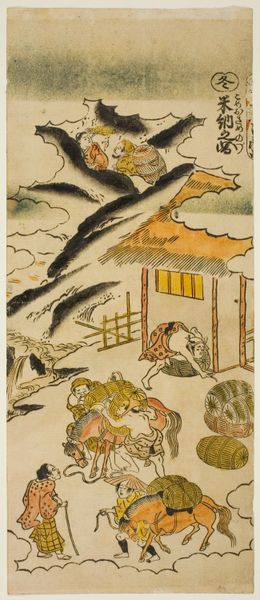
print, woodblock-print
# print
#
asian-art
#
landscape
#
ukiyo-e
#
figuration
#
woodblock-print
Dimensions: 13 1/8 × 6 1/8 in. (33.4 × 15.6 cm) (image, sheet, vertical hosoban)
Copyright: Public Domain
Editor: This woodblock print, "Evening Bell at Miidera Temple," made around 1730 by Nishimura Shigenaga, feels surprisingly dynamic. I’m drawn to the figures and how they seem to be caught in a specific moment in time within this landscape. What strikes you most about this piece? Curator: Well, considering its production as a commercially available print, let's look at the labour involved in producing such a piece. The initial drawing by Shigenaga, the carving of the woodblocks – requiring highly skilled artisans, each potentially specializing in key blocks versus color blocks - and then the printing process itself. How many impressions could these blocks withstand before needing replacement? Editor: That’s interesting. So, even the apparent simplicity relies on layers of skill and production decisions. What does the process tell us about the art form? Curator: The *ukiyo-e* tradition arose from a specific cultural and economic moment. The *chonin*, the merchant class, had disposable income and sought leisure and entertainment. Woodblock prints became a relatively affordable commodity. Think about it - mass production altered access. This artwork becomes both aesthetic object and document of socio-economic structures, don't you think? It speaks to both individual craftsmanship and industrial potential. And consider how this piece, even depicting the spiritual Miidera Temple, circulated and was consumed within the burgeoning pleasure districts. What’s the relationship between high and low culture on display here? Editor: I see. It challenges the idea of art existing outside the everyday lives and economies of the people who made and purchased it. Curator: Exactly! Examining its materials and distribution unveils a layered narrative about labor, access, and the fluidity of cultural value in 18th-century Japan. Editor: I’ll definitely consider the material context and labour involved in creating art moving forward!
Comments
No comments
Be the first to comment and join the conversation on the ultimate creative platform.
